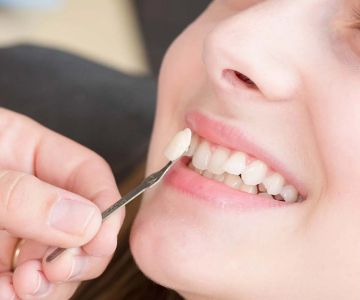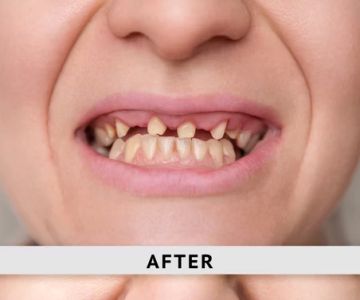Understanding the Recovery Period After Tooth Restoration: A Comprehensive Guide
Tooth restoration is a common procedure in restorative dentistry, aimed at repairing and restoring the function, integrity, and morphology of missing or damaged tooth structures. This process may involve fillings, crowns, bridges, or implants, each presenting a unique recovery experience for patients. As informed dental health consumers, understanding the nuances of the recovery period can significantly enhance healing, comfort, and outcomes.
Dentistry Toothtruth provides valuable insights to ensure you are well-prepared post-procedure.
1. Initial Post-Operative Care: What to Expect
The first few hours after a tooth restoration procedure are crucial in setting the stage for successful recovery. Most patients experience mild discomfort and sensitivity as the anesthesia wears off. Following your dentist's aftercare instructions precisely can minimize complications and encourage healing.
Use the prescribed analgesics to manage pain and avoid strenuous activities immediately following your appointment.
Swelling is a common response after any dental procedure. Applying an ice pack on the affected side of your face in 15-minute intervals can reduce swelling and promote comfort. Moreover, avoid touching or pressing the restored area with your tongue or fingers to prevent disruption of the healing process.
2. Managing Pain and Discomfort
Pain management is often a primary concern for patients after tooth restoration. Over-the-counter pain relievers, such as ibuprofen or acetaminophen, are typically effective. However, adherence to prescribed medication is crucial for managing pain effectively.
If you experience severe or persistent pain, it is essential to contact your dental provider as it may indicate complications such as infection or improper fitting.
In a study conducted by the American Dental Association, it was found that approximately 75% of patients reported significant pain relief within the first 48 hours when following their dentist's prescribed pain management plan.
3. Dietary Recommendations for Optimal Recovery
Your diet plays a pivotal role in your recovery post tooth restoration. Initially, adhere to a soft foods diet to prevent undue stress on the restored structure. Foods such as yogurt, mashed potatoes, applesauce, and broths are recommended.
Additionally, maintaining hydration is crucial; however, avoid using a straw for at least 24 to 48 hours post-procedure to prevent dislodging any clots.
Avoid hard, crunchy, or sticky foods, which can compromise the integrity of temporary restorations or interfere with the healing of permanent restorations.
4. Maintaining Oral Hygiene During Recovery
Continuing your oral hygiene routine is integral to recovery, but it may require some modifications to protect the treated area. Most dentists recommend gentle brushing with a soft-bristled toothbrush around the restoration site.
Flossing is encouraged; however, care should be taken to ensure it does not disturb the restoration.
Rinsing with a saltwater solution or an antiseptic mouthwash can assist in maintaining oral hygiene and reducing the risk of infection during recovery. Be sure to follow any specific instructions from your dentist regarding oral care products suitable for your situation.
5. Follow-Up Appointments: Monitoring Progress
Dental recovery does not end with your procedure; follow-up appointments are critical for evaluating the healing process and the success of the restoration. These visits allow your dentist to adjust the restoration if necessary and address any concerns you may have.
Regular check-ins can help prevent long-term issues by providing early detection and intervention for potential complications.
According to the American Academy of Restorative Dentistry, timely follow-up care is a significant predictor of successful dental restoration outcomes.
6. Long-Term Care and Considerations
Once the initial healing phase is complete, maintaining the restoration involves ongoing care and lifestyle considerations. This includes adhering to a regular oral hygiene regimen and avoiding habits that can damage dental work, such as nail-biting or using teeth to open packages.
Protective measures, such as wearing a mouthguard during sports and avoiding chewing on hard objects, can prolong the life of tooth restorations.
Patients who invest in preventive care often enjoy better outcomes and prolonged restoration life, significantly improving their quality of life.
Conclusion: Effective Recovery Enhances Long-Term Success
The recovery period after tooth restoration is a vital phase that influences the longevity and success of the dental work. By understanding the importance of initial care, managing discomfort effectively, adhering to dietary and hygiene recommendations, and attending follow-up appointments, you can significantly enhance your restoration's success.
Partnering with your dental team and following their expert guidance is essential for a smooth recovery. Visit Dentistry Toothtruth for more resources and to ensure you are well-informed throughout your oral healthcare journey.
Ultimately, informed and proactive patients find themselves better equipped to manage recovery responsibly and maintain their dental health for years to come.







 Westgate Dental Arts
Westgate Dental Arts Coventry Family Dental
Coventry Family Dental Familia Dental
Familia Dental Dr. Daniel S. Fife, DDS
Dr. Daniel S. Fife, DDS Dentistry At Suburban Square: Michael I. Wollock, DMD
Dentistry At Suburban Square: Michael I. Wollock, DMD Comfort Care Dental
Comfort Care Dental The Importance of Oral Health Education During Pregnancy for a Healthy Pregnancy
The Importance of Oral Health Education During Pregnancy for a Healthy Pregnancy Why Skipping Dental Checkups Can Lead to Bigger Oral Health Problems
Why Skipping Dental Checkups Can Lead to Bigger Oral Health Problems Advantages of Porcelain Dental Restorations
Advantages of Porcelain Dental Restorations Best Tips for Brushing Your Teeth Properly for Healthy Gums: Essential Techniques for Oral Health
Best Tips for Brushing Your Teeth Properly for Healthy Gums: Essential Techniques for Oral Health How Can Diabetes Cause Tooth and Gum Problems? Preventing and Managing Oral Health Issues
How Can Diabetes Cause Tooth and Gum Problems? Preventing and Managing Oral Health Issues Healthy Habits for Promoting Good Oral Health and Hygiene: Tips for a Healthy Smile
Healthy Habits for Promoting Good Oral Health and Hygiene: Tips for a Healthy Smile